The Value of HR Analytics Tools: Key Features for 2025
Updated : last month
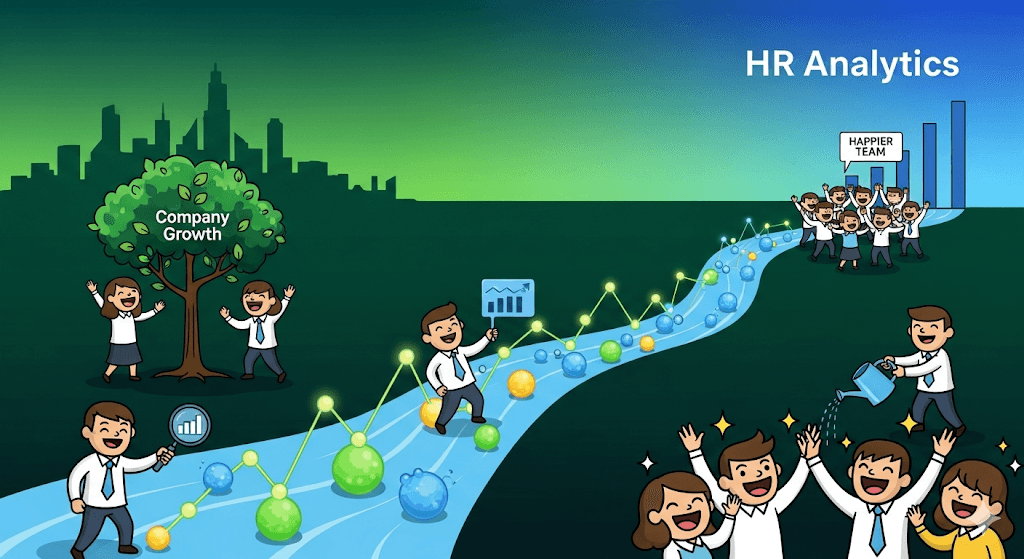
HR analytics helps HR teams use data to make smarter decisions that directly impact a company’s growth and success. In fact, more than 70% of business leaders say people analytics is one of their top priorities.
The HR analytics industry itself is booming, expected to grow at a CAGR 14.8% and reach $8.59 billion by 2030.
If your HR department isn’t using HR analytics to improve efficiency, your business could fall behind while others invest in digital tools and move ahead.
Here is a quick refresher on what HR analytics is and the biggest benefits it can bring to your business.
What is HR Analytics?
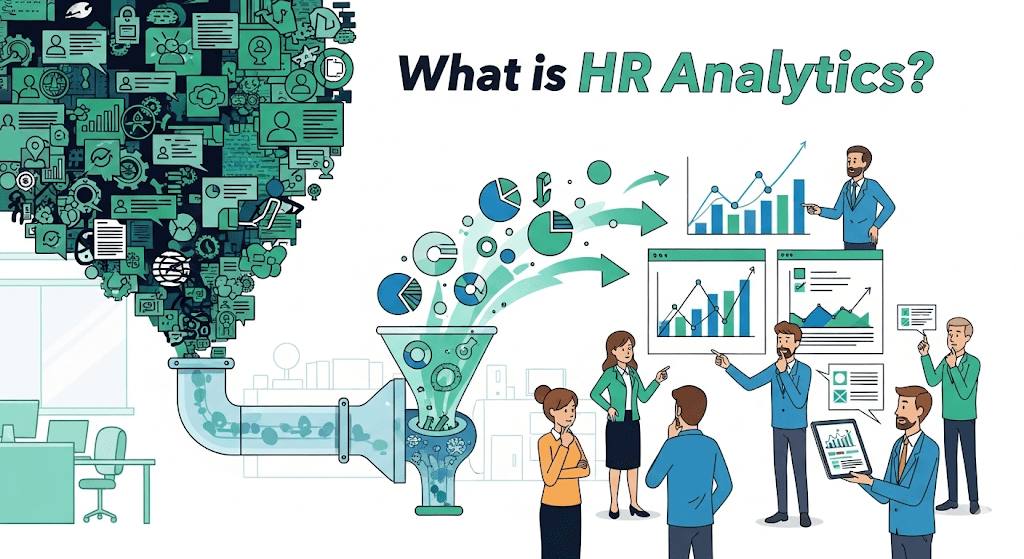
HR analytics is all about using data to understand your workforce. Most importantly, how your organization is performing.
HR teams can know problem areas and take steps to fix them when they track key numbers and trends.
It can lead to -
-
higher efficiency
-
better productivity
-
stronger employee retention
-
more effective training, and
-
overall business growth
What Are The Different Types Of HR Analytics?
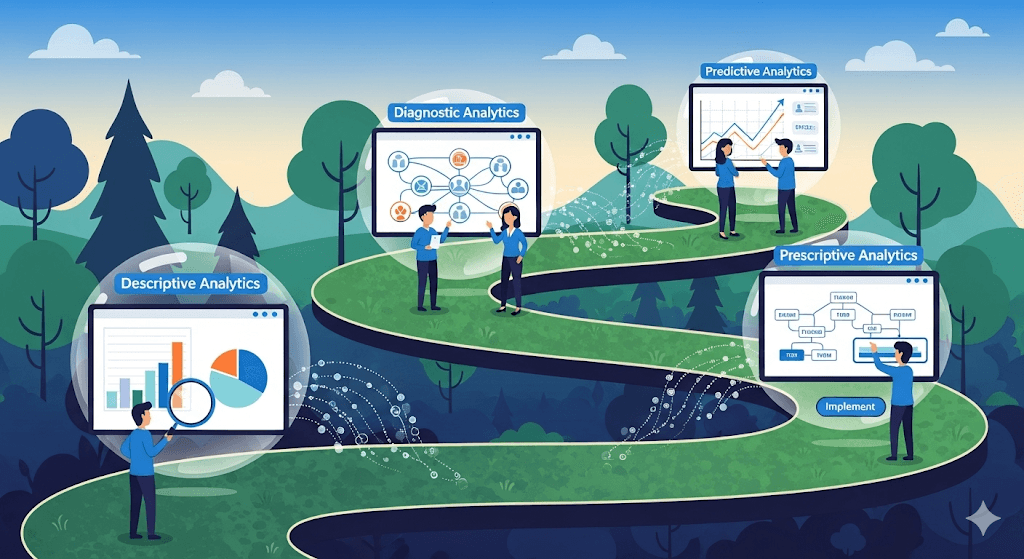
HR analytics helps HR professionals make smarter, data-driven decisions. It also gives HR teams the chance to play a more strategic role. The entire thing is done by providing insights that directly support business growth.
To do this, HR can use four main types of analytics:
-
descriptive
-
diagnostic
-
predictive, and
-
prescriptive
# 1. Descriptive Analytics
Descriptive analytics is the starting point of HR analytics. It looks at past data to explain what happened in the organization.
You can consider it as looking in the rearview mirror. It summarizes trends and patterns but doesn’t predict the future.
The type of analysis is sometimes called decision analytics. It uses statistical methods to make sense of historical data. HR teams might calculate -
- averages
- ranges
- rankings, or
- spot variations
These are important to uncover useful patterns.
How does it work?
Descriptive analytics can use both numbers and qualitative information.
For example, HR might calculate:
- Average absenteeism or PTO days
- Variations in performance scores across teams
- Frequency of turnover events
By spotting these patterns, HR can identify strengths, weaknesses, and areas that need attention.
Pros and Cons
**Advantages **
-
Simple to use and understand
-
It needs only basic math
-
It makes complex data easy to present
Disadvantages
-
Only look at “what” happened, not “why” or “how.”
-
Limited in scope
-
It doesn’t provide deeper explanations or predictions
2. Diagnostic Analytics

Diagnostic analytics goes a step beyond descriptive analytics.
- The descriptive analytics shows what happened and
- diagnostic analytics explains why it happened.
It digs into data to uncover the root causes behind -
- trends
- anomalies, or
- correlations
In short, it turns raw numbers into meaningful insights.
When you identify these patterns, relationships, and contributing factors, HR teams can better understand problems. They then target the right areas for improvement.
How Diagnostic Analytics Works?
A typical diagnostic analysis includes:
-
Spotting patterns. Then, anomalies in the data
-
Investigating what factors might be influencing those trends
-
Using statistical methods. It determines cause-and-effect relationships
Common techniques include:
-
Data drilling: Zooming in from general data to detailed insights
-
Data mining: Discovering patterns that may predict future outcomes
-
Probability theory: Measuring uncertainty in events
-
Regression analysis: Finding which variables affect outcomes
-
Correlation analysis: Testing relationships between factors
-
Statistical analysis: Interpreting data to uncover hidden patterns
Pros and Cons
Advantages
-
Provides deeper insights into the reasons behind data trends.
-
Helps HR make more informed decisions.
Disadvantages
-
Still reactive
-
It focuses only on past events
-
Doesn’t always give clear, forward-looking actions for planning
3. Predictive Analytics
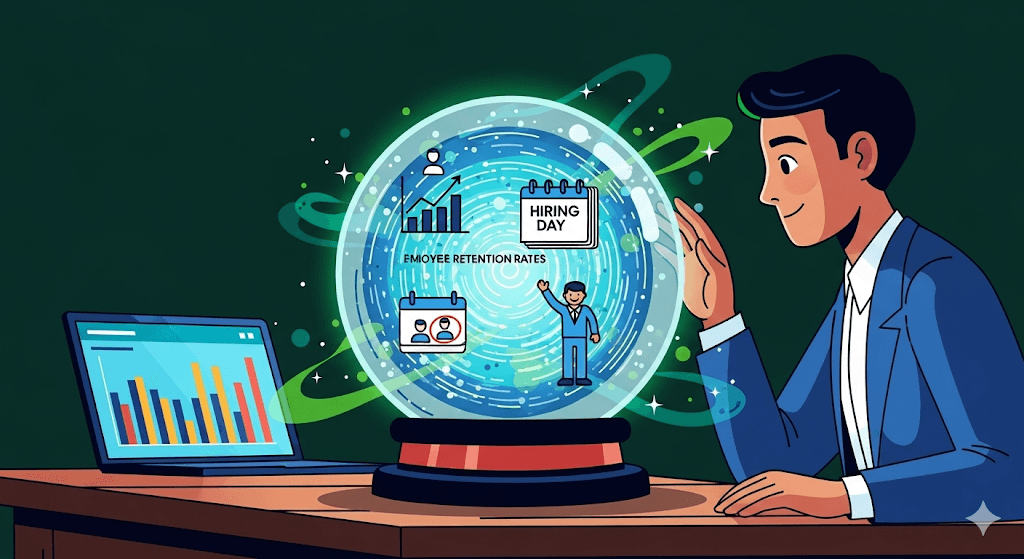
Predictive analytics uses past and present HR data to forecast future outcomes. HR leaders can make smarter decisions about -
-
hiring,
-
training, and
-
retaining top talent
It is done by analyzing information like -
-
job skills
-
engagement levels
-
productivity, and
-
resumes
Instead of just showing what happened (descriptive) or why it happened (diagnostic), predictive analytics answers: “What is likely to happen next?”
How Predictive Analytics Works?
The process usually involves:
-
Collecting and then categorizing past and current data
-
Identifying any patterns, correlations, and irregularities
-
Building a model. It predicts future events
-
Testing and refining the model. It ensures accuracy as new data comes in
Pros and Cons
Advantages
-
It reduces human error in decision-making
-
It helps organizations avoid risks and improve efficiency
-
It provides more accurate workforce forecasts
Disadvantages
-
It needs large and reliable data sets.
-
It is hard to account for every variable that could influence outcomes
-
The models must be updated regularly to stay relevant
4. Prescriptive Analytics

Prescriptive analytics is the most advanced stage of HR analytics. While predictive analytics tells you what might happen, prescriptive analytics goes one step further to suggest what you should do about it.
In simple terms, it turns predictions into targeted recommendations. It helps HR leaders choose the best actions to -
-
solve problems
-
improve performance, and
-
drive success
How Prescriptive Analytics Works?
-
Think of prescriptive analytics like Netflix recommendations.
-
Just as Netflix suggests movies based on your viewing habits, prescriptive analytics suggests actions based on patterns in your HR data.
-
Predictive analytics shows the likely outcomes.
-
Prescriptive analytics shows not only the outcomes but also the steps you can take to influence them.
It uses advanced tools such as:
-
Machine learning
-
Algorithms
-
Artificial intelligence
-
Pattern recognition
It allows HR teams to anticipate scenarios and select interventions that are most likely to deliver the best results.
Pros and Cons
Advantages
-
It helps HR make smarter, real-time decisions
-
It solves complex problems and highlights new opportunities
-
It can suggest strategies, such as targeted training programs, to boost productivity
Disadvantages
-
It relies heavily on the quality and completeness of data
-
It can be time-consuming since it’s an ongoing process
-
The recommendations may not always capture the human side of HR. The algorithms can miss nuance
-
HR leaders still need to carefully weigh which actions are practical and ethical
Because of its complexity, prescriptive analytics is often seen as the “final frontier” of HR analytics and requires advanced skills in data science and AI.
What is an HR Analytics Tool?
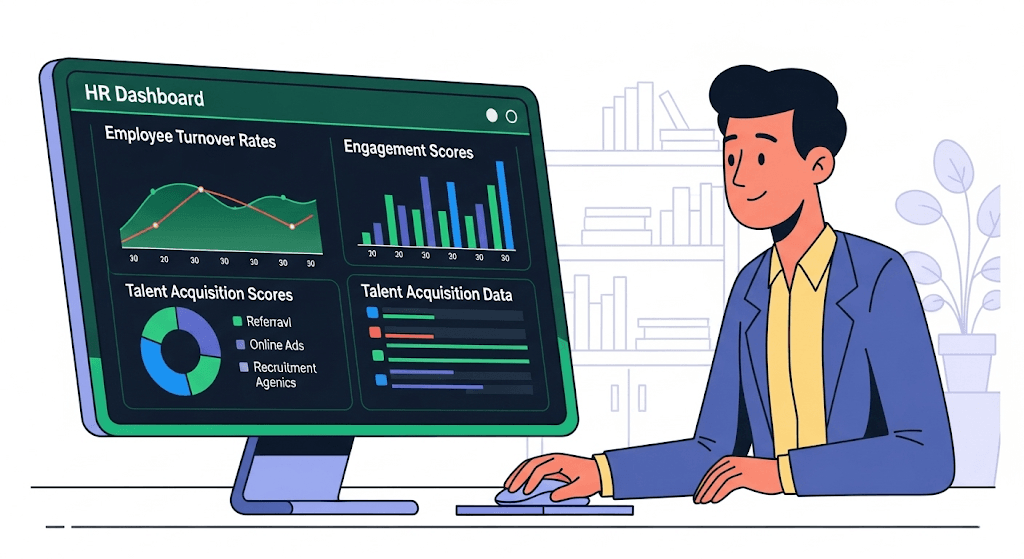
An HR analytics tool is software that collects and analyzes employee and workforce data to provide useful insights.
Many of these tools also let you create reports and visual dashboards so you can clearly see what’s happening in your organization.
These tools are a must-have for HR teams. Doing HR analytics manually is not only time-consuming but also prone to errors.
A very small business with just one or two employees can manage without one. However, any organization beyond that will need an HR analytics tool to get accurate, reliable results.
What Are Some Types Of HR Analytics Tools?
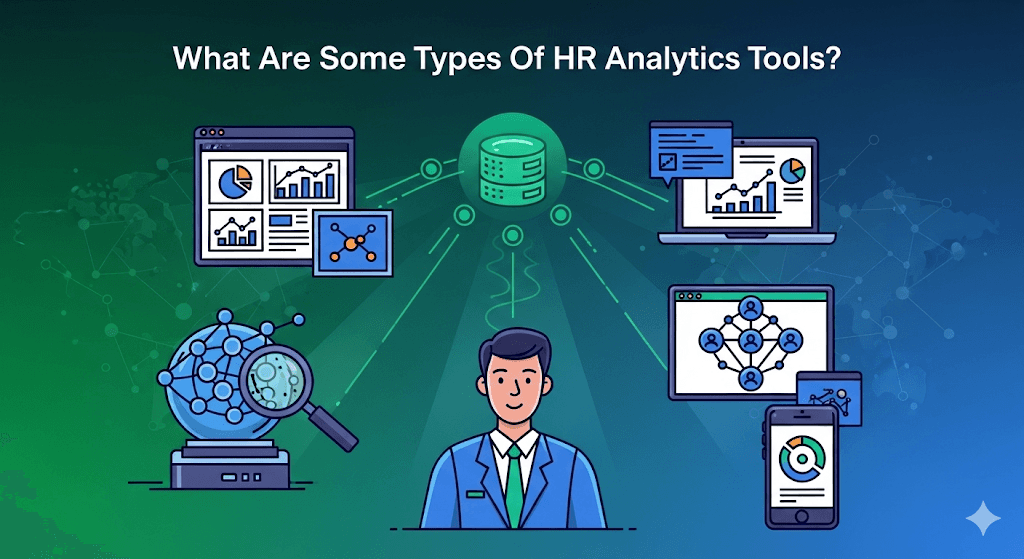
1. uRecruits
uRecruits is an AI-powered HR analytics software that turns raw HR data into clear, decision-ready insights. It helps HR teams stay a step ahead—boosting efficiency, sharpening talent strategies, and analyzing performance at every level.
Top Features
-
Predictive Workforce Analytics: Forecast hiring needs, surface talent gaps, and act before challenges arise.
-
Skills Mapping & Development Analytics: See capabilities across teams and align training, promotions, and growth with business goals
-
DEI (Diversity, Equity & Inclusion) Analytics: Track DEI metrics, spot gaps, monitor progress, and build a fair, inclusive workplace
-
Recruiter Scorecards: Measure sourcing efficiency, interview turnaround, offer acceptance, and candidate satisfaction to enable focused coaching
-
Employee Experience Analytics: Understand retention drivers, reduce churn, and track engagement and real-time performance
-
Ethical & Responsible AI: Privacy-respecting, transparent insights that support trustworthy, explainable decisions
Pros
-
Truly end-to-end analytics and action platform
-
Reduces HR busywork by 60% through automation
-
Predictive + prescriptive intelligence built in
-
Clear DEI tracking and recruiter performance transparency
-
HR knows what to do next
-
Scales for SMEs and large enterprises alike
Cons
Its modular setup allows businesses to activate only what they need.
2. Personio
Personio is a GDPR-compliant HR analytics platform. It gives you insights across -
-
onboarding, payroll
-
employee performance, and
-
more
When you bring all HR data into one place, it helps you quickly see where your workforce is excelling. Also, you get to know where improvements are needed.
You can filter and sort KPIs for deeper analysis and visual dashboards (charts and tables).
It makes it easy to spot trends like time-to-hire or absence rates. Personio’s user-friendly design makes it suitable for businesses of all sizes.
Top Features
-
Track and filter employee data for detailed KPI analysis.
-
Use charts and tables for quick insights
-
Create your own reports or use predefined templates
-
Protect sensitive data with secure permissions
Pros
-
Easy to use.
-
Detailed insights across HR functions
-
Flexible and customizable reports
Cons
-
Best suited for European and UK markets
-
It may be less optimized elsewhere
3. Visier
Visier is built for enterprise-level organizations and specializes in people analytics. It pulls data from multiple HR systems like -
- HRIS and
- ATS.
It then harmonizes it into one reliable data stream. From there, the advanced algorithms identify patterns and predict outcomes. It include - rnover risk or
- productivity shifts.
The Visier is powerful because it is -
-
Sophisticated
-
more expensive and
-
complex for teams new to analytics
Top Features
-
It combines HR data from multiple sources into one view
-
Forecasts different trends like turnover or performance issues
-
Save time with ready-made analytics and benchmarks
Pros
-
Deep, enterprise-grade people analytics
-
Benchmarking tools to compare against industry peers
-
Robust integration across HR systems
Cons
-
Higher cost compared to other solutions
-
Some users report a steep learning curve
-
Requires additional HR tools for a complete system
4. PeopleForce
PeopleForce offers a CoreHR solution. It centralizes all employee information for easier access. It also helps track engagement with pulse surveys and eNPS (Employee Net Promoter Score).
-
Custom reporting lets HR teams build tailored insights to fit their needs.
-
It’s popular among small to mid-sized businesses. But some users note limited customization compared to larger platforms.
What Are Some of the Key Features?
-
Keep all employee info in one place
-
Build tailored reports for different HR needs
-
Use surveys and feedback tools to measure satisfaction
-
Fully synced with the web version for on-the-go access
Pros
-
Mobile-friendly
-
Easy to use
-
Good engagement tracking tools
-
Affordable option for smaller companies
Cons
-
Some advanced features are missing
-
Limited customization options
5. HiBob
HiBob helps HR teams track and analyze workforce trends. It is done with real-time dashboards. It offers -
-
engagement surveys
-
feedback tools, and
-
both pre-built and customizable reports for deeper analysis
The platform integrates HR data from multiple sources. Some users note that it may not be comprehensive enough for large enterprises.
Top Features
-
Track metrics like retention, absenteeism, and more
-
Spot workforce trends automatically
-
Identify employees most at risk of leaving
Pros
-
Strong employee data tracking tools
-
Real-time dashboards for instant insights
-
Pre-built reports available
Cons
-
Some features are limited or missing
-
May not fully meet the needs of very large organizations
6. ADP DataCloud
ADP DataCloud is a cloud-based HR analytics tool that helps organizations use their workforce data to make smarter decisions. It is about -
-
talent
-
payroll, and
-
operations
It’s built to work especially well with ADP’s payroll systems and is suitable for companies of all sizes.
Key Features:
-
Custom reports and insights on workforce trends
-
Real-time dashboards for performance management
-
Tools to analyze employee turnover and create retention strategies
-
Forecasting tools for workforce planning and budgeting
-
Smooth integration with ADP’s payroll and HR systems
Pros:
-
Works with ADP payroll and HR products
-
Easy-to-use interface with clear, actionable insights
-
Provides real-time analytics to support decision-making
Cons:
-
Works best for businesses already using ADP services
-
Customization options are limited compared to standalone analytics tools
-
Expensive for smaller businesses with tighter budgets
7. IBM Watson Talent Analytics
IBM Watson Talent Analytics is an advanced HR analytics platform. It is powered by AI and machine learning. It helps companies -
-
improve recruitment
-
monitor employee performance, and
-
plan workforce needs through data-driven insights
Key Features:
-
AI-powered predictive analytics to improve hiring and reduce turnover.
-
Deep insights into employee behavior and performance
-
Recruitment analytics to make hiring more efficient
-
Smooth integration with existing HR software
-
Customizable reports and data visualizations
-
Natural language processing (NLP) to analyze employee feedback
Pros:
-
Provides cutting-edge, AI-driven workforce insights
-
Advanced tools to optimize recruitment strategies
-
Flexible and scalable, integrates with multiple HR systems
Cons:
-
Needs expertise to get the best results
-
High costs may not suit smaller businesses or startups
-
Setup and implementation can be complex
8. Workday
Workday is a comprehensive HR platform that combines human capital management (HCM) and analytics.
-
It offers tools for
-
recruitment
-
payroll
-
talent management, and
-
workforce planning
These features make it a strong choice for mid- to large-sized companies.
Key Features:
-
All-in-one HR management
-
Real-time analytics for smarter decisions
-
Workforce planning and forecasting tools
-
Integration with performance management systems
-
Employee engagement and sentiment analysis surveys
Pros:
-
Wide range of features
-
It is suitable for large organizations
-
User-friendly design and intuitive navigation
Cons:
-
Too costly for small and mid-sized businesses
-
Requires training for new users to fully utilize
-
Some users report slower data processing at peak times
- Tableau
Tableau is a powerful data visualization tool that HR teams can use to turn raw workforce data into clear, interactive dashboards.
It’s designed to help businesses track and analyze HR metrics such as -
-
employee engagement
-
performance, and
-
retention
Key Features:
-
Interactive dashboards for HR data and KPIs
-
Real-time, customizable visual reports
-
AI and machine learning integration for predictive insights
-
Connects seamlessly with multiple HR data sources
-
Collaboration tools to share insights across teams
-
Strong filtering and data manipulation options
Pros:
-
Excellent data visualization capabilities
-
Easily connects with a wide range of data sources
-
Highly flexible and customizable for specific business needs
Cons:
-
Requires a steep learning curve for beginners
-
High licensing costs for full functionality
-
Not a complete HR system. It focuses mainly on data visualization
Finally…
HR analytics is no longer a “nice-to-have.” It’s a must-have for modern organizations. The right analytics tool can turn raw data into powerful insights for -
-
improving hiring decisions
-
boosting retention
-
productivity, and
-
workforce planning
Whether you’re a growing startup or a large enterprise, you need to invest in HR analytics. It ensures that your people strategy is backed by facts, not guesswork.
The bottom line? Companies that use HR analytics tools today are better prepared for tomorrow’s challenges.
If you want to stay ahead, make data-driven HR a core part of your business strategy.
Frequently Asked Questions
How is HR analytics different from traditional HR reporting?
Traditional HR reporting focuses on “what happened.” E.g., number of hires or resignations. HR analytics goes a step further to explain “why it happened.” It even predicts “what might happen next.”
Do small businesses need HR analytics tools?
Yes. The very small teams might manage without them as soon as a company scales beyond a handful of employees. HR analytics tools become essential to avoid errors and save time.
What challenges do companies face with HR analytics?
Challenges often include -
- poor data quality
- lack of expertise
- Resistance
- adopting new tools, and
- high costs for advanced platforms
Can HR analytics predict employee turnover?
Yes. Predictive analytics can help identify patterns. Those include low engagement, missed promotions, or pay disparities. These often lead to resignations.

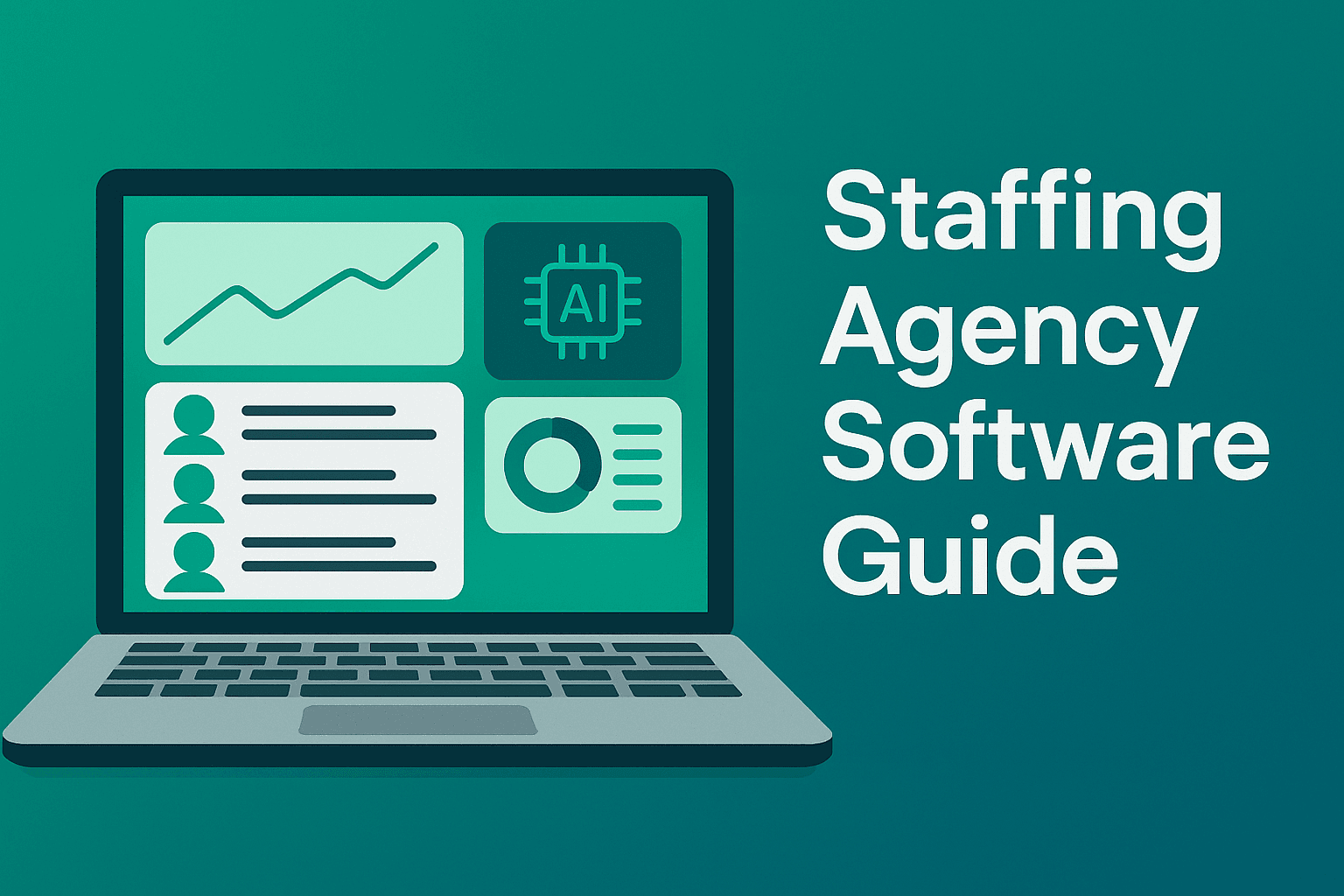
The Ultimate Guide to Staffing Agency Software for Modern Recruiting
If you own a staffing business, you are already aware that recruiting is like a high-speed chase these days. There is a shortage of talent,...

Written By
Thomas Alexander

20+ Productive Tools for Recruiters 2025
Because Your Hiring Game Deserves Superpowers!! Recruiting in 2025 is not about just posting jobs and screening resumes. It is about data, speed, personalization, automation,...

Written By
Thomas Alexander

20+ Recruitment Analytics Software Every Recruiter Should Know About
Honestly speaking, it was always a guess followed by a stack of resumes when hiring. However, in the modern world of hustle and bustle that...

Written By
Thomas Alexander